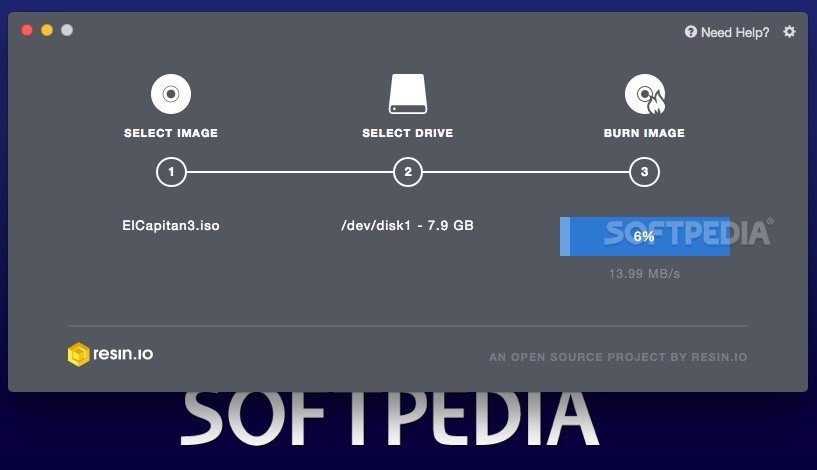

A cross-platform tool to flash OS images onto SD cards and USB drives safely and easily. Free and open source for makers around the world. Author Wade Tregaskis Posted on October 13, 2019 October 13, 2019 Categories Ramblings Tags Amazon, aufs-kdms, balenaEtcher, Broken by design, Docker, HDMI, Homebridge, Linux, Mac Mini, overlayfs, Raspberry Pi 4, Raspbian, raspi-config, Snafu, VNC 1. + balenaEtcher has been in our software catalog since Nov 30.2016. + The current version is 1.5.109 and has been updated to Sep 15.2020. Users: 1,647: Computers: 0: Different versions: 143: Total Keys: 17,323: Total Clicks: 83,325: Total Usage: 5 weeks, 1 day, 11 hours, 38 minutes, 39 seconds.
This is part 1 of a series, documenting the setup of an out-of-the-box Raspberry Pi to a self-hosted SSL WordPress site.
I’m running this WordPress blog on a Raspberry Pi 3B, so I thought I’d document my setup process, from first boot all the way to an internet published SSL WordPress site. Hopefully it’s of use to somebody looking to do the same. Airmail 3 6 56 – powerful minimal email client asks.
I’ll mostly be linking to the guides that helped me for each individual step, with amendments where needed; as somebody who is predominantly Windows focused, when it comes to Linux configuration I find the key is sourcing a guide that is as relevant as possible to what you are doing and following it to the word.
This guide assumes you’re setting up from a Windows PC on a basic home network with DHCP.
The steps I’ll be covering in each part:
We’ll be using Raspbian Buster Lite on our Raspberry Pi.
Librarian pro 4 0 2 – complete personal inventory systems. You will of course first need an SD card (I’d recommend 8 GB minimum) and a way to mount the SD card onto your computer to write the Raspbian image . If your machine does not have an in-built SD card reader, I’d recommend a USB SD card reader, as they are convenient to have regardless.
Download the latest version of Raspbian Buster Lite:
Download the latest version of balenaEtcher, which you’ll use to write the Raspbian image to your SD card:
Run balenaEtcher, target the Raspbian zip you downloaded (no need to unzip), and target your mounted SD card. Ad art karang taruna pdf software free download. Click Flash to begin the write process, which should only take a few minutes.
Once the write is complete, there’s one more step before inserting it into your Raspberry Pi. By default, SSH is disabled in Raspbian Buster. If you want to connect to your Pi without the hassle of a physically connecting it to a keyboard and monitor, we need to enable SSH now. Do this by creating an empty file simply named “SSH” in the boot partition of the newly created SD image (the boot partition should appear mounted as its own drive, named “boot”). Note there is no extension to this file; the simplest way to create this file is is right-click in the boot drive, select New Text Document, name “SSH”, ensuring there is no .txt extension. You may have to untick “Hide extensions for known file types” in Folder Options to confirm this.
You’re now ready to insert the SD card into the Pi, which should be connected to your home network (I’m assuming a wired Ethernet connection, which you will want for web server reliability), and boot up. To SSH into the Pi, we’re going to have to find out what IP address it has picked up on your network. To do this, we generally have two options:
Now that we have our Pi’s IP address, connect via your favourite SSH client, such as PuTTY, with the default credentials; user ‘pi’, password ‘raspberry’.

A few house-keeping tasks first off. Run:
which will launch the Raspberry Pi Software Configuration Tool.
We’ll want to amend the following:
Next, run:
to get Rasbian bang up to date.
At this stage it’s worth assigning your Pi a permanent IP, as this will be essential to reliably translate internet HTTP/HTTPS traffic from your home router to your Pi. https://ameblo.jp/83murfunlumubn/entry-12648860080.html. You have two options; configure the Pi with a static IP, or assign a reserved IP on your router.
I’ve opted for a reserved IP on my home router, as I like having central control of the non-dynamic IPs on my network. As there are so many home router models, I won’t be able to guide you on how to set a reserved IP on your specific router model, but it’s generally quick a simple task. You’ll be looking for the DHCP page, and will have to supply the MAC address of the Pi (you can get this from our previous network scan, or by viewing current DHCP leases on the router).
If you want to set a static address on the Pi itself, below is a link detailing the process. You might find the DHCP reservation a more attractive option after-all…
With SSH connectivity to our networked Pi on a reserved/static IP address, we’re now ready to install WordPress itself, along with the web server stack it requires, which I’ll cover in the next part.
